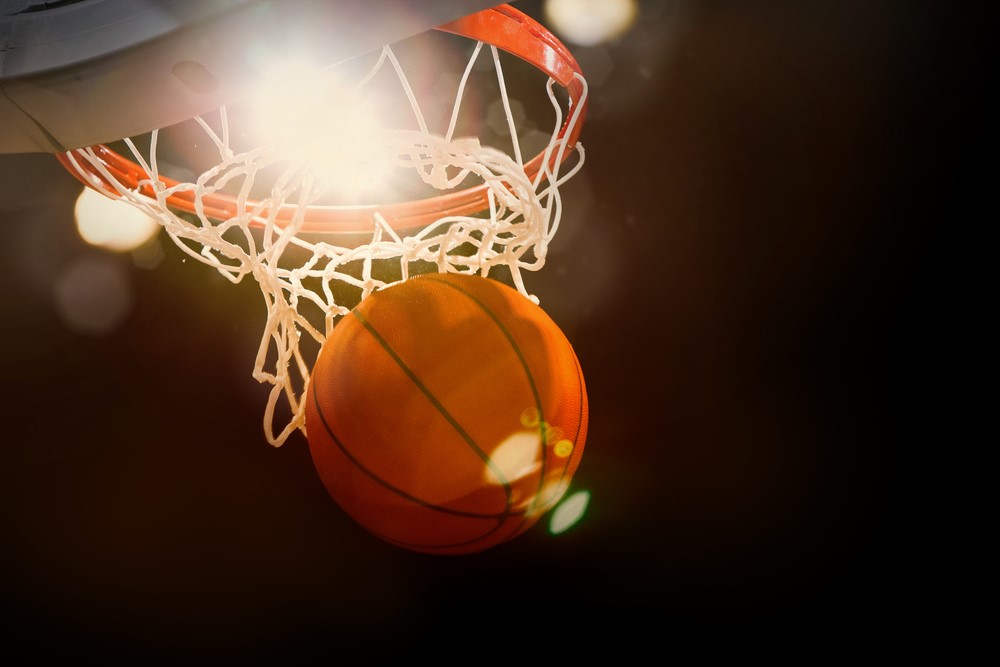
The league regulates the size and characteristics of an NBA basketball to ensure every game is fair and played with the same ball type every time. These differ from regulated balls in high school and college games and have seven key characteristics.
Contents
7 Characteristics of an NBA Basketball

Basketballs come in all shapes, sizes, and designs. While many of these balls are great for practice or high-school games, only a few will make the cut when playing in the big leagues.
Here is a list of the seven characteristics an NBA basketball must have.
1. Circumference
The ball’s circumference plays a considerable role in whether it can be used in NBA games. The official ball in the NBA has a circumference of 29.5 inches (size seven). The size of the ball is the same for all men’s basketball games from high school to college.
2. Diameter
The diameter of the average hand is around seven inches, making the diameter of an NBA basketball just a bit larger, measuring nine inches. This makes it easy to grip and control the ball while moving and shooting.
The diameter of the ball is also essential when it comes to shooting. The ball should always be an appropriate size to fit a basketball hoop 18 inches in diameter and through the net, which is 18 inches wide.
3. Weight
The weight of a basketball is crucial. A ball that is too heavy is hard to dribble and shoot. A ball that is too light will reduce accuracy and control. The weight requirements for an NBA basketball are between 20 and 22 ounces (567 – 623 grams).
4. Pounds of Pressure
The pressure in a basketball affects how well the ball bounces and moves. Officially approved basketballs in the NBA must contain between 7 ½ to 8 ½ pounds of force.
5. Material
The material used to make a basketball has changed numerous times over the years. While the OG basketballs were created from leather, today’s ball is often made of rubber and other synthetic materials.
The material is important because it affects how the ball bounces, how easy it is to handle, and how long it can last.
6. Manufacturer
Numerous manufacturers design and distribute basketballs around the world. However, there are only a few that are well-known. While the NBA used to use Spalding balls during their games, they recently switched to Wilson during the 75th anniversary season.
Throughout basketball history, the league has only swapped ball manufacturers four times. Wilson was the first manufacturer to provide official NBA basketballs in 1946 and the following 37 seasons.
7. Number of Balls
The regulations on NBA basketballs don’t stop regarding how they are made. There are also rules on how many you must have in each game. According to the official NBA guidelines, each game must have a minimum of nine balls for each team for warmups before the game.
History of Basketball Sizes

The NBA hasn’t always had rules and regulations regarding basketball size, shape, or design. In fact, it wasn’t until 1979 that the National Basketball Association decided to set standards for their ball sizes.
The first standard for ball size was 25 inches in circumference, progressively getting larger over time inch by inch, reaching the official 29.5 in 1984.
The league chose the standard size to accommodate players’ size and various factors relating to gameplay.
Different Sizes for Different Leagues
Twenty-nine and a half inches might be the standard and regulated size for NBA games. However, this isn’t the same across leagues, national and international.
- WNBA (Women’s National Basketball Association): WNBA has a different set of standards for the size of their basketball. The balls used in the professional women’s league measure 28.5 inches across. This is considered a size six ball and weighs 20 ounces, the same as an NBA one.
- NCAA (National Collegiate Athletic Association): College teams can easily adjust to the pros since they also use the NBA official ball size of 29.5 inches with a weight of 22 ounces.
- AAU (Amateur Athletic Union): The AAU also follows the same guidelines as the NBA regarding the size of its basketball.
- FIBA (International Basketball Association): FIBA utilizes two sizes of basketballs during games 29.5 inches and 28.5 inches. That makes the ball interchangeable, no matter who is playing.
Different Sizes for Different Ages
NBA-size basketballs are designed to accommodate different age groups. The size of the ball is designed for the size of the basketball player.
- Ages 9-11: 27.5 inches (size five)
- Ages 12+ girls and women: 28.5 inches (size six)
- Ages 12-14 boys: 28.5 inches (size six)
- Men: 28.5 inches (size seven)
Check the sizes on each ball; they can vary depending on the manufacturer unless you purchase an NBA-approved product. These are great guidelines for practicing and during games.
Only New Balls Permitted
In the NBA, no ball can be used more than once. Every game starts with a brand-new basketball. This is a strict rule the league sets for a few different reasons.
- Fairness: Using an old ball can change the potential outcome of a game due to flat spots or scuffs on the ball’s surface.
- Safety: Using a ball in multiple games can create cracks and scuffs that could cause abrasions or cuts on a player’s hands.
- Consistency: Using one ball for multiple games can lead to inconsistencies, from bounces to how it dribbles.
Take a close look at the game ball the next time you watch your favorite team battle it out on the basketball court. Can you tell how fresh and smooth it looks?
Final Thoughts
The NBA has a strict set of standards for the basketballs used in each game to ensure every match is fair and safe. If the ball falls outside of these guidelines in any way, it will be rejected, and a new ball will be brought in.